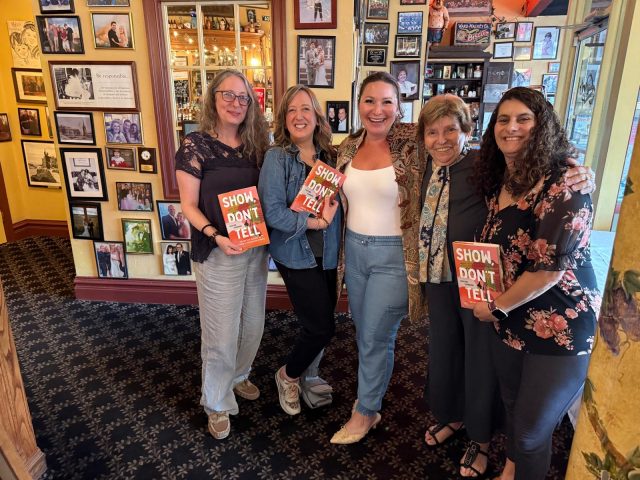Apply Yourself! A Grant Writing Guide for Teachers
- May 5, 2014
- By Julie Knutson
 Not infrequently, teachers dream up projects that exceed the supply closet’s inventory or the photocopier’s capacities. Field trips to observe city government in action and outings to nearby nature preserves cost money, as does the formation of a fledgling literary journal or a school-wide recycling program.
Not infrequently, teachers dream up projects that exceed the supply closet’s inventory or the photocopier’s capacities. Field trips to observe city government in action and outings to nearby nature preserves cost money, as does the formation of a fledgling literary journal or a school-wide recycling program.
Instead of deferring these novel experiences, educators can turn to grant-making bodies and crowdsourcing services for needed resources. Traditional funders like the National Education Association (NEA) – along with newer tools like DonorsChoose – offer teachers countless opportunities to see their visionary classroom experiments to fruition.
“BIG IDEAS”: BRAINSTORMING CLASSROOM NEEDS AND POTENTIAL PROJECTS
A grant-writing tutorial from the NEA rightly asserts that “grant makers are in the business of funding ideas, as opposed to merely providing funds for materials.” Before researching potential funders or sitting down at your keyboard to hammer out a proposal, reflect upon what would motivate, engage, and inspire your students in a lasting way. Rather than simply noting that your students need books, explore all possible ways in which the resource could be used. For example, would a new set of classroom texts nurture home-school partnerships through a parent-child bookclub? What do educational researchers have to say about the benefits of such programs? If you can substantiate the reason for the request among the students that you serve, you’re on the way to a successful proposal.
In this initial brainstorming phase, also consider the cross-curricular potential of the project. Could a class garden support character education concepts like respect and responsibility? If so, a host of funders beyond your subject area opens up to you.
FINDING FUNDERS
Foundations support a range of areas, from professional development and classroom enrichment to STEM and humanities programs. Investigate in advance to ensure that your idea aligns with the donor’s mission and grant parameters. Does the award only support public school programs, as is the case with DonorsChoose? Or are applications open to public and private school teachers alike? Who can use the grant and for what purpose? Asking these questions prior to drafting your application ensures that it won’t be an exercise in futility.
The Internet and books on grant writing lead aspiring grantees to countless sources of support. The NEA maintains a comprehensive list of resources, as does Fund for Teachers. Always look to local community foundations to finance programs of benefit to your city or region.
THE BASICS OF A FUNDING PROPOSAL
Once you’ve refined your idea and located grantors whose mission and purpose aligns with your vision, it’s time to get to the task of writing.
Grant gurus the web over offer advice on the core elements of a proposal – Pearson even offers a comprehensive, free online tutorial on the topic. While in-depth descriptions of what to include in each section are also offered by Michigan State University, a short summary of key points to include follows:
- An abstract that introduces the project and argues for its need.
- Background information on your school, which may include an outline of its history, faculty, demographics, and special programs, among other items. In this section, assure funders that yours is a viable and trustworthy institution that will use awarded funds well.
- A needs or problem statement that draws on facts, data, and research to justify the importance of your project.
- A description of the program chronicling your solution to the problem set forth in the preceding section.
- A description of the program’s outcomes, highlighting what will change as a result of it.
- Evaluation criteria demonstrating how you will measure whether or not the program’s goals have been met.
- Other funding sources that you’ve petitioned for support.
- Projections of sustainability and future funding, to show that it will continue beyond their donation.
- A budget that shows project costs.
- Any requested supplemental materials and a cover letter.
The length of your proposal will vary by the amount of money that you seek – nonprofit management consultant Barbara Davis notes that requests for small amounts (less than $1,000) should compress these basic requirements into two to three typed pages.
Finally, attend to all questions asked by the funder in clear, concise, and honest prose, aiming to persuade the reader of the necessity and validity of your project. If you believe in your project and your students – and convey that to the grantors – you’ll pave your own path to new sources of funding.
For sample budgets and cover letters, grant seekers also may wish to consult Secrets of Successful Grantsmanship by Susan L. Golden and Demystifying Grant Seeking by Larissa Golden Brown and Martin John Brown. The former text also offers helpful tips on building relationships with potential donors prior to the application process.


